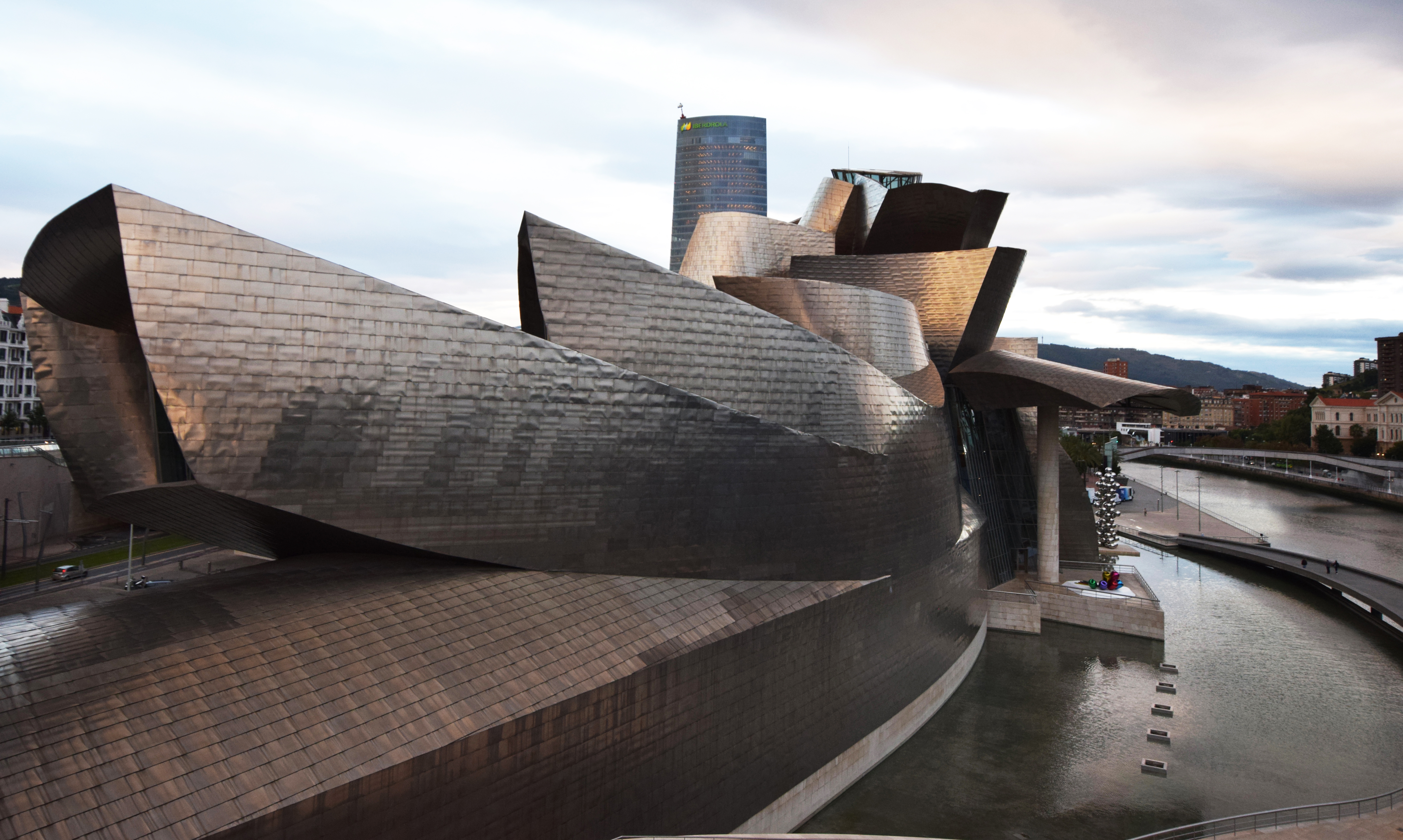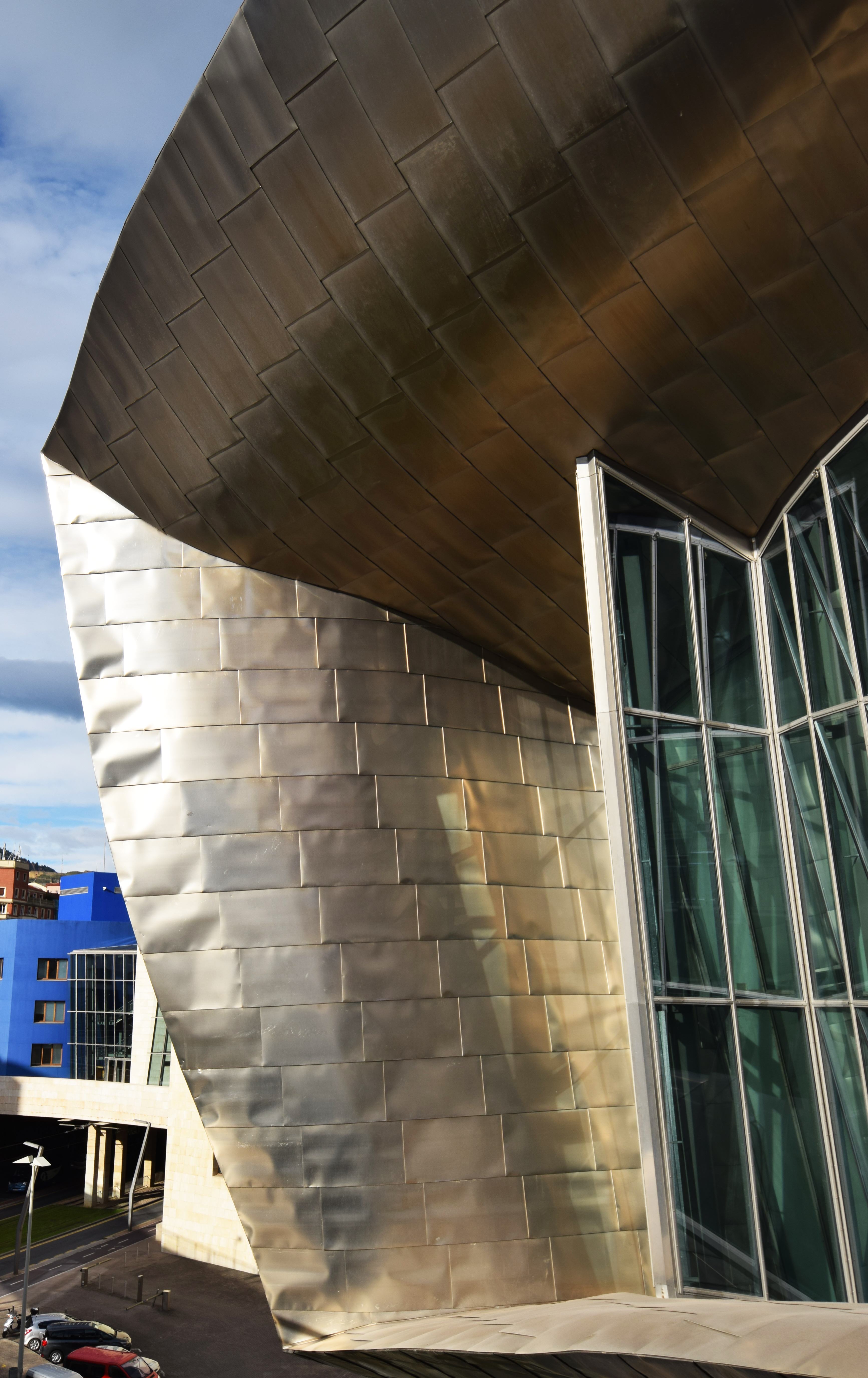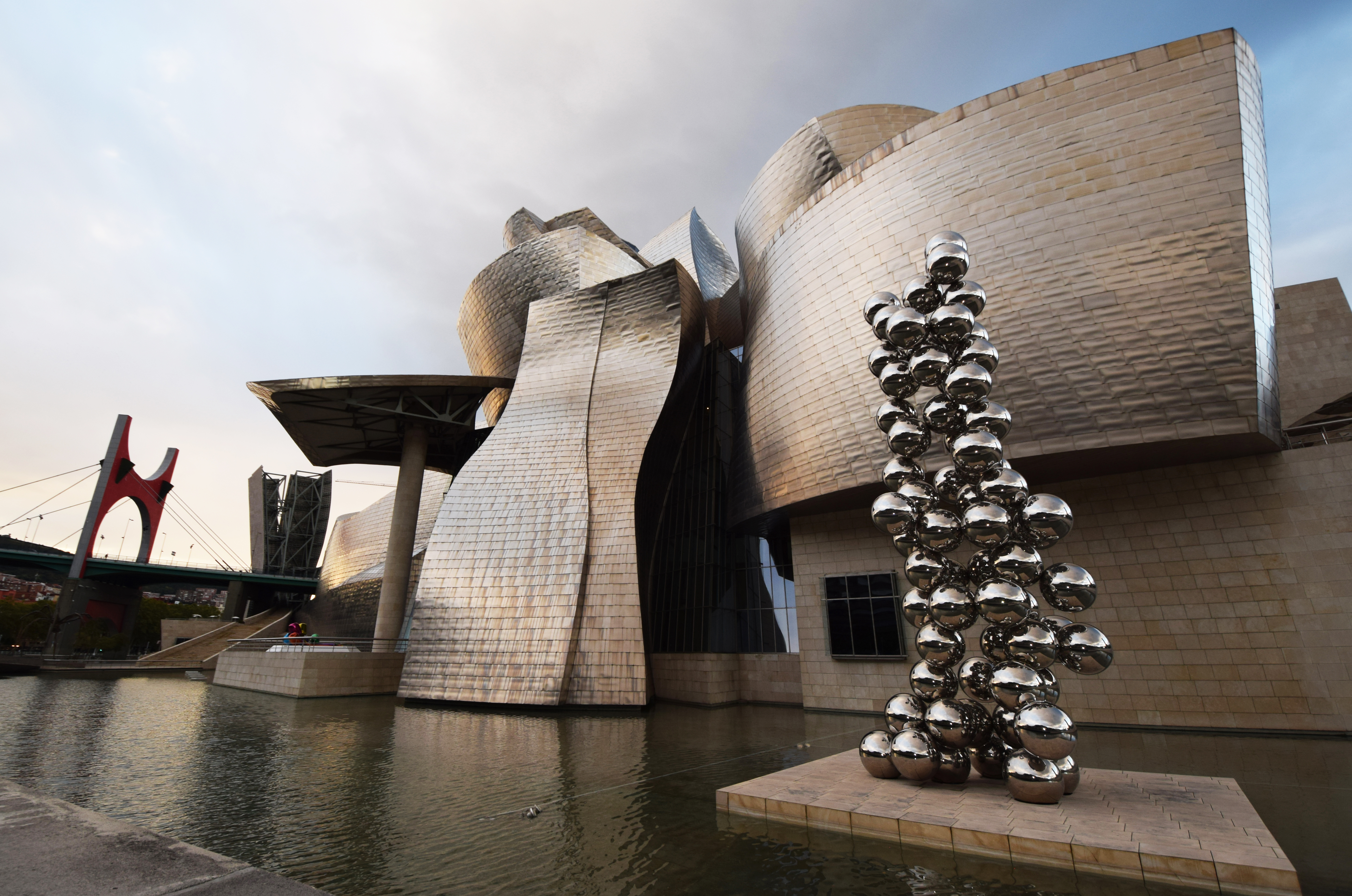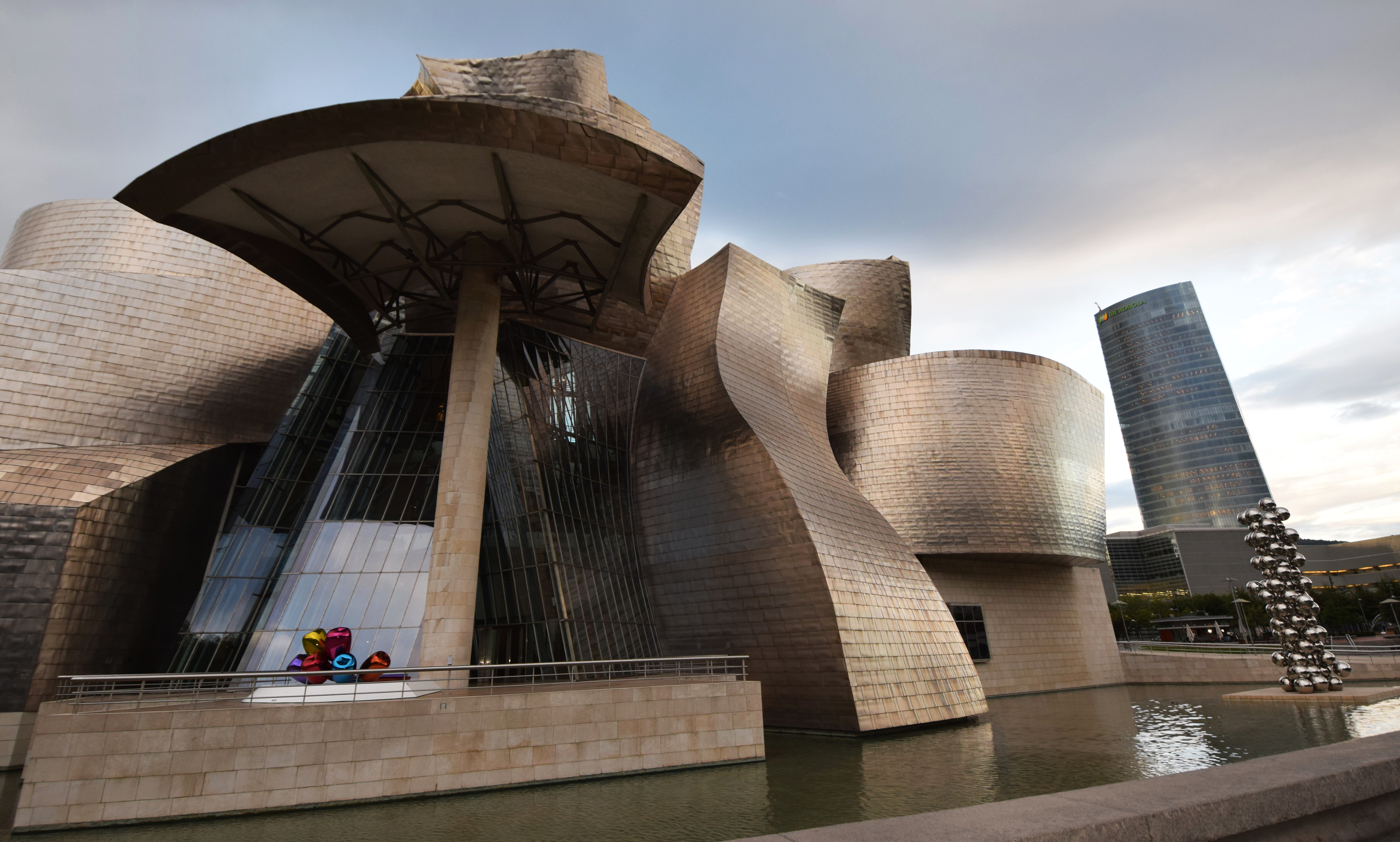BILBAO, BASQUE COUNTRY, SPAIN - Esther Boulandier skips across the reception area of this city’s renowned Guggenheim Museum with the boundless energy of a child let loose in a candy store.
“Welcome to the “Googie,” says Esther with a playful smile.
“That’s what people here call the museum. It’s also called the dog house because of our guard dog.”
The “guard dog” Esther is referring to is the Jeff Koons sculpture known as the “Puppy” — a giant flowered West Highland Terrier that stands outside one of the main entrances of the museum. The Puppy is one of two permanent exhibits by the legendary American sculpture at the Guggenheim Bilbao — the other is his colourful Tulips creation.
While the exhibits inside this fabulous museum fascinate lovers of modern and contemporary art, it’s really the building that draws them here.

Above: Frank Gehry's museum known as Bilbao's Guggenheim is a twisted titanium masterpiece.
“You could say the building is our largest and most important exhibit,” says Esther, who tells me the Frank Gehry-designed masterpiece “literally” injected new life into this once gritty industrial city.
“Bilbao was dead, from a tourism standpoint, before the Guggenheim opened in 1997,” says Esther. “Maybe we’d get 20,000 visitors a year before 1997, but now over one million people from all over the world visit Bilbao and it’s all because of Mr. Gehry’s creation.”
Gehry’s glittering museum, which stands on the banks of the Nervion River, is one of the most admired works of contemporary architecture — hailed by industry insiders “as a signal moment in architectural culture,” because it represents "one of those rare moments when critics, academics, and the general public were all completely united about something."
The museum was also named in the 2010 World Architecture Survey as one of the most important works completed since 1980. Architect Philip Johnson described it as "the greatest building of our time.”


Left: Gehry used 33,000 titanium tiles to build the museum. Right: The modern exhibits draw fans from everywhere.
High praise indeed, but for the people of Bilbao, the completed Guggenheim gave them something to brag about after years of industrial upheaval that resulted in bitter strikes, plant closures and even deaths.
Located on land once used as a container port, it was here that workers and police clashed in the 1970s, leaving many dead and injured and the city in turmoil.
“Mr. Gehry could have built the Guggenheim anywhere but he chose this location because it brought to city back to the river, where Bilbao all started,” says Esther.
The narrow Nervion River is Bilbao’s link to the Atlantic and was an important trading post for the British in the 16th and 17th centuries. In fact, in the fields near where the Guggenheim now stands, English sailors introduced the game of soccer to the people of Bilbao.
“Our soccer club is known by the English name ‘Athletic Bilbao,’ instead of the Spanish word Atlético (like Atlético Madrid). We use the English name out of respect for our history with the English,” says Esther.
Gehry defied all the acceptable design limits when creating the Guggenheim Bilbao — “everything I’ve done from the day I started this project has been some kind of search — an odyssey to find a new language,” Gehry told Vanity Fair magazine just before its opening.
“I want buildings that have a passion in them,” the Canadian born Gehry told the magazine. “Make people feel something — even if they get mad at it.”
Looking at the Guggenheim, one can only feel good — it’s cloak of reflective titanium panels glitter in the sun and its brilliant sweeping facade shimmers on the calm surface of the river.

Above: The magnificent museum sits on the banks of the Nervion River and some say looks ship-shape.
“Mr. Gehry bought up lots of titanium from Russia when it was still very affordable and created 33,000 titanium tiles for the Guggenheim Bilbao — and all had to be put in place by hand,” Esther tells me.
Some people have described the building as "a fantastic dream ship of undulating form in a cloak of titanium,” while others say the tiles look like the scales of a fish.
The massive 32,500-square-metre building features 19 galleries and its most popular permanent exhibit is Richard Serra’s Snake — a work made for the inauguration of the Guggenheim Museum Bilbao. It consists of three enormous, serpentine ribbons of hot-rolled steel that are permanently installed in the museum’s Fish Gallery.
Because of its affiliation with the Guggenheim Museum in New York, the Bilbao museum is able to feature many Andy Warhol exhibits.
Esther also tells me that “70 per cent of the museum is self financed” thanks to its over 18,000 members and some very wealthy benefactors.
Thanks to its dramatic design, the Guggenheim Bilbao is used as a backdrop in many movies — a James Bond episode The World Is Not Enough was filmed here and directors of Bollywood flicks find the museum’s facade very inviting.
The Guggenheim Bilbao is the only museum in the world that also features a Michelin star restaurant — Nerua, which is located next to the sculpture of the spider ‘Mama’, a work by artist Louise Bourgeois. Gehry played a major role in the restaurant’s design and the kitchen, under the direction of decorated Chef Josean Alija, relies heavily in the nearby Bay of Biscay to supply the ingredients which highlight many of Nerua’s gastronomic delights.
“I love my job because I love the Guggenheim,” says Esther as our tour ends.
Bilbao is love at first sight thanks the Guggenheim.
About the Author
Marc Atchison is a veteran journalist and a seasoned traveller with more than 20 years of travel writing experience. As the former Travel Editor of the Toronto Star, Canada's largest newspaper, and now Editor-in-Chief and Senior Writer for TraveLife magazine (Canada) and travelife.ca, Marc has been to over 100 countries in the world. Japan is one of his favorite destinations and he's been there on numerous occasions.